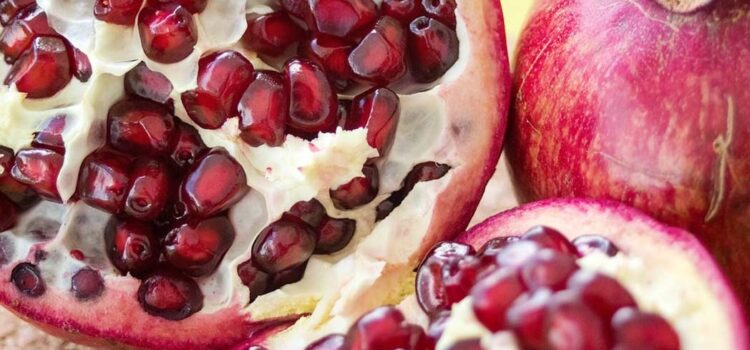Health Benefits of Pomegranates

Pomegranates aren’t like apples or bananas. You can’t simply bite into them or peel back the skin. They are much more mysterious fruits. Their leathery maroon skin, once opened, reveal and spongy white flesh and seed covered juice sacs.
These arils are the only edible parts. They are what provide the powerful health punch pomegranates have become known for. From just this one fruit, you get more polyphenols — a top ranked antioxidant — than you would from wine and green tea. You also get a good amount of potassium, vitamin C, folic acid and fiber.
Pomegranate: A Historic Fruit
Believe it or not, pomegranates were not widely available in the United States until 2004. But the fruit has been popular throughout the Mediterranean and Middle East since ancient times. The old Egyptians were buried with the fruit; images of pomegranates were woven onto the borders of Hebrew priestly robes; and the Babylonians chewed the seeds before battle in order to make them invincible.
Pomegranate Seeds of Success
Most often, pomegranates are used for juice. Yet, the edible, sweetly-tart seeds can also be consumed whole or sprinkled on a dish as garnish. Dried pomegranate seeds add unique flavor to dishes, and can be found readily in Pakistani and Indian markets. Basically, the seeds can be used in anything from appetizers to desserts. Make them into jellies, use them in salads, even try them in guacamole or turn the juice into wine.
Taking out the seeds is easy. Just slice off the top, cut the fruit into sections, place in a bowl of water, roll out the arils and discard the rest. One medium fruit will yield about one half cup of juice, which can be made using a basket press or a typical orange squeezer. The seeds can be stored in a plastic bag in the fridge for up to a week or frozen for months. The best time to buy nature’s sweet tarts is September to January, but even in the off-season, the juice is readily available in grocery stores as are the arils in the frozen food section.
The Multiple Uses of Pomegranates
An easy, tasty and healthful Middle-Eastern drink can be made by mixing the juice of one pomegranate with a squirt of lemon juice and 1/8 teaspoon of orange blossom water. Mix with sugar to taste and add sparkling water.
Pomegranate juice can also be used as an antiseptic on small cuts or to dye natural fabrics (the juice stains clothing permanently). So whether you’re drinking or eating it, make sure you wear a bib!




